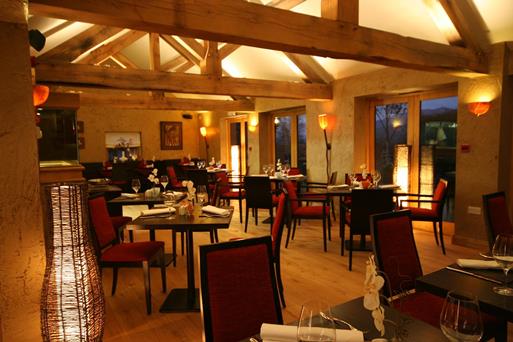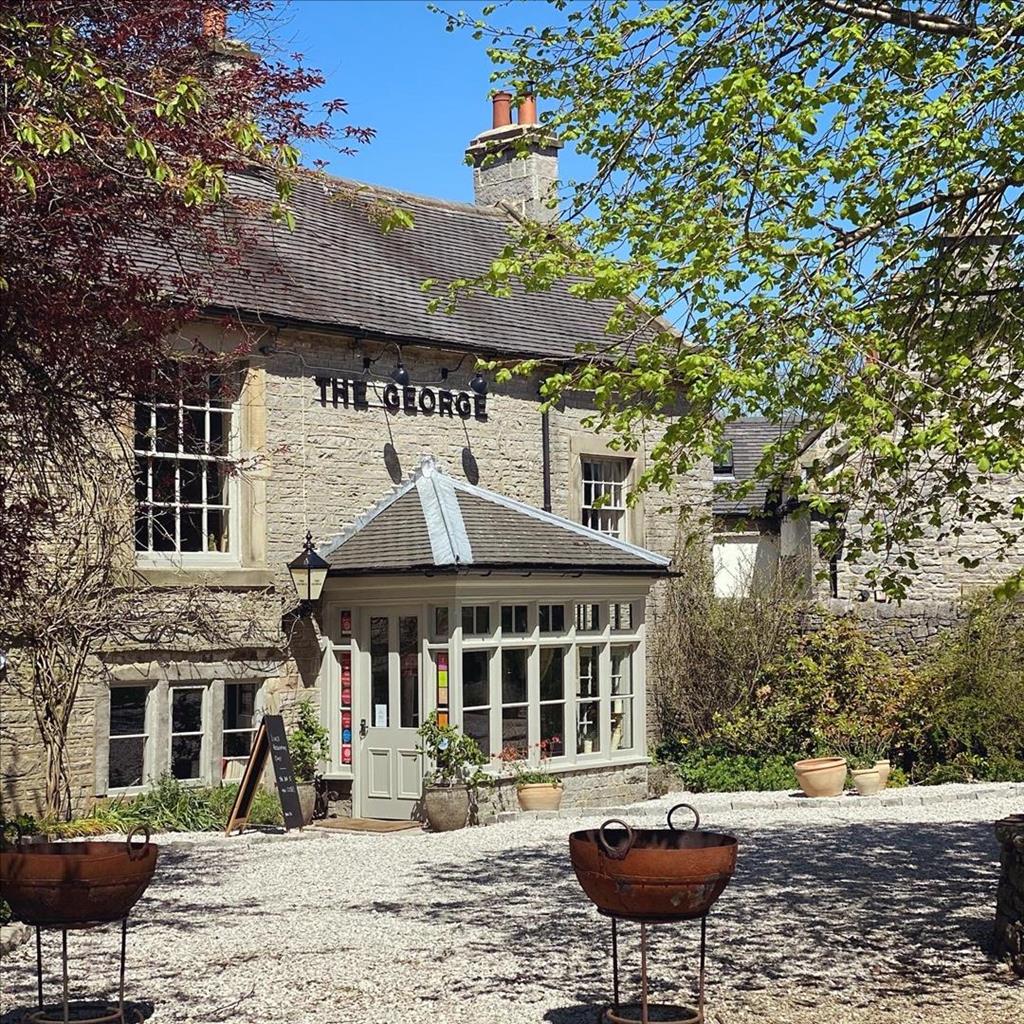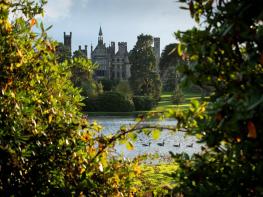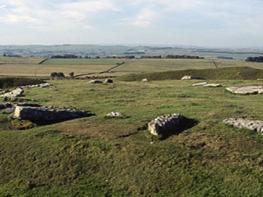Lane Head Barns includes two luxury self-catering holiday cottages within the courtyard of Lane…
Onecote

Far-reaching hilltop views and tucked away hamlets
8.25 miles (13.3kms)
About the walk
The Staffordshire Moorlands occupy the south west corner of the Peak District National Park, but compared to the crowds in nearby Hartington or Dovedale the high, rounded moors west of the River Manifold are sparsely populated and relatively little visited. This is rugged hillfarming country, typified by a few small villages like Onecote (pronounced ‘Oncut’) and dozens of isolated farmsteads, where cattle and sheep graze the rough pasture. Although farming is the main livelihood today, in the late 1700s there was a copper mine at Mixon, which is passed towards the end of the walk. Packhorses took the ore to copper works at Cheadle, but there was little profit in the business and the mine lasted barely 50 years.
Life on the moors
With little tree cover the open moorland can be an exposed place in bad weather, but choose a decent day and you will be rewarded with far-reaching views both across Staffordshire and the Potteries and into the heart of the Peak District. The sound of skylarks and pipits fill the air and the wet meadows and flushes are home to curlew, lapwing and snipe.
The River Hamps, which the walk shadows at its beginning and end, is also a valuable wildlife corridor. However, this diminutive tributary of the Manifold that rises high on the moors often disappears completely in hot weather, hence its Old English name ‘Hanespe’ meaning ‘summer dry’.
A Dickensian plot
Onecote Lane End, a late 18th century farmhouse (and private property) on the edge of the village of Onecote, might seem an unremarkable place today, but its previous residents once provided one of our greatest novelists with a plot line. It was home to the Cook family and in the 1840s Joseph Cook spent four years and nearly £900 on a lawsuit to try and obtain £300 bequeathed to him by his late father, Thomas, that was due to be paid when his wife passed away. A solicitor from Leek who was involved in the case produced a pamphlet protesting at the injustice and sent a copy to Charles Dickens, who had just published the first of what was to be 20 instalments of Bleak House. The novelist promptly used the case, with little in the way of embellishment, in subsequent chapters to describe a long and drawn-out litigation that’s at the heart of what is one of his finest novels. Also drawing also on his personal experience as a law clerk, it’s a withering criticism of the British judicial system and in particular the slow and unwieldy Chancery law that was subsequently reformed.
Walk directions
Turn right out of Douse Lane along the B5053 for 100yds (91m). Cross over for the footpath through a field, turn right on to a track and follow waymarks to the right of Field House. Follow the path through undergrowth and after a footbridge go up a bank. Follow the signpost to Ford, straight ahead through successive fields, before dropping down left to the hamlet.
Walk through the farmyard of Banktop, turn left on to the lane and left again over a bridge. Just past Ford Hall Farm take the footpath on the left, following the waymarked path around The Old Hall. At the back swing right, up through fields, to join a rough track. Nearing the top ignore a right fork and cross a stile to pass to the right of Sheldon Farm then half right to reach a gate.
Cross the road for a footpath through a bumpy field. Beyond a gate go over a stile on the right, then head left downhill. Approaching a barn go left through a squeeze stile and straight down fields towards Butterton. At the bottom go over steps by Greenhead Cottage and turn right to follow its driveway to the road.
Turn left and walk through Butterton, swinging west to join the Onecote/Warslow road. Leaving the village go right before the hill on a surfaced drive. Just past Hoobrook Cottage go straight on at the bend for a waymarked path out across fields above a stream. Continue this all the way to the road and cross it for the gated lane opposite.
Follow this quiet lane for about a mile (1.6km). At Breach Farm it ascends steeply via hairpins, then as it reaches the top turn left on a signposted footpath. Cross a farm drive and go down through fields. Nearing the bottom cross a stile and head down left to cross the River Hamps via a footbridge. Climb back up the far side and join a wide track past a farm and all the way up to the top of the hill.
Cross the cattle grid and turn immediately left, over a stile, to join a rough track beside the field edge. Entering a wide open field head half left, then beyond the brow of the hill go along the right hand side of a wall. Cross some waste ground for a wall stile in the far corner and turn right through the next field to reach Mixon.
Go up steps on the right, signposted ‘Onecote’. Keep to the top of the fields and where the farm drive bends left downhill, go straight on for a field edge path. Beyond a cross wall go half left through a wide field, join a track in the next, then head right for a stile by a cattle trough. Turn half left down through fields, passing to the right of Onecote Grange, for footbridges to a lane. Turn left to return to Onecote.
Additional information
Field paths, lanes and rough moorland tracks, some potentially boggy, 24 stiles
Rolling farmland, rough pasture and open moors
Plenty of livestock in fields, so on lead for most of the time
OS Explorer OL24 White Peak
Roadside on Douse Lane, Onecote
None on route, nearest at Waterhouses
WALKING IN SAFETY
Read our tips to look after yourself and the environment when following this walk.
Find out more
Also in the area
About the area
Discover Staffordshire
It was Staffordshire that bore the brunt of the largest non-nuclear explosion of World War II, when a munitions dump at RAF Fauld went up in 1944. It was also the county’s regiment that once boasted within its ranks the most decorated NCO of World War I, in the person of William Coltman (1891-1974). Going back a little further, George Handel penned his world-famous masterpiece The Messiah on Staffordshire soil. During another chapter of Staffordshire history, the county was home to the first canals and the first factory in Britain, and it had front-row seats for the drama surrounding one of the most notorious murder trials of the 19th century, that of Doctor William Palmer.
In outline, Staffordshire looks not unlike the profile of a man giving Leicestershire a big kiss. The man’s forehead is arguably the best region for hillwalking, as it comprises a significant chunk of the Peak District. This area is characterised by lofty moors, deep dales and tremendous views of both. Further south are the six sprawling towns that make up Stoke-on-Trent, which historically have had such an impact on Staffordshire’s fortunes, not to mention its culture and countryside. This is pottery country, formerly at the forefront of the Industrial Revolution and the driving force behind a network of canals that still criss-cross the county.
Nearby stays
Restaurants and Pubs
Nearby experiences
Recommended things to do
Why choose Rated Trips?
Your trusted guide to rated places across the UK
The best coverage
Discover more than 15,000 professionally rated places to stay, eat and visit from across the UK and Ireland.
Quality assured
Choose a place to stay safe in the knowledge that it has been expertly assessed by trained assessors.
Plan your next trip
Search by location or the type of place you're visiting to find your next ideal holiday experience.
Travel inspiration
Read our articles, city guides and recommended things to do for inspiration. We're here to help you explore the UK.













